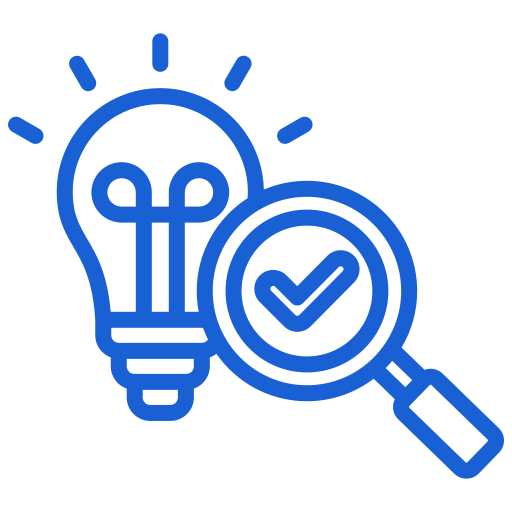Overview of Functional Specs
It's no secret that you must have clearly defined processes with frequent checkpoints and checklists for a project to succeed. But what does this process look like in practice? What work needs to be done, and how can we effectively measure our success? The answer is with a functional specification document. This document is one of the most important in any project or software development process (agile or waterfall). It's a document describing what the end-users want the system to do, not how it works. It includes input, output, control logic, storage, data handling, and security requirements.

Who is it for
This document primarily targets developers responsible for implementing the outlined specifications and requirements

Seek Clarity
It should be clear and comprehensible for all team members, including clients and stakeholders
Product management involves everything from creativity and discovery to marketing and sales. Click to explore about our, Product Management Roadmap
What is a Functional Specification Document?
It is a document describing what the end-users want the system to do and not how it works. It includes project scope, risk and assumptions, product overview, use cases, system configuration, non-functional requirements, and error reporting. It is a document that specifies the functionality of a software system. It typically includes the specifications for all or most of the following:
-
User interface design and navigation
-
Data input and output formats
-
File formats, data types, and constraints
-
Database design, data access methods, and constraints
-
Programmatic interfaces for accessing external systems
-
Error handling procedures - Communication protocols for interfacing with external systems
-
Security requirements
Functional specifications can be created using a variety of techniques. These techniques can include:
- Specifying how data is stored and processed by the computer system
- Using a data model
- Providing data representation
- Designing the logical data structure that represents the data
- Implementing an error recovery procedure
- Working with XML
- Adding business logic to a functional specifications document
Performance Automation Testing continues to evolve to meet modern enterprise's growing demands. Click to explore about our, Automated Performance Testing
Purpose and Importance of the Document
It is the best way for stakeholders to understand the end product without knowing how it will work. A system's instructions explain how it should be used and what it should do. They are usually written by the person who designs the system.
The functional specification document is essential because it helps ensure that a system can be used in the way initially intended and that it will work with other programs and systems that may not have been considered during design.
Functional specifications are typically authored by a user, often the system designer. They outline the system's goals and objectives, expected use cases, requirements for data input and output files, any external devices that must be connected to the computer(s), and the necessary computing power for calculations.
Authors and Contributors
The person who creates the varies depending on the company's needs. The technical writer or product manager might work with developers to create a specification for a new program or features for an existing one.
In some cases, two people create this document: the product owner and the developer. The product owner ensures the functional specifications make sense and meet user needs. The developer is responsible for defining a detailed description of how the system will be built with a complete analysis of all requirements.
Platform strategies need to be designed to help the existing ecosystem emerge, thrive, and function better. Click to explore about our, Platform Design Principles
Key Components and Sections
It is a technical document describing what the end-users want the system to do and not how it works. It's a document that includes information about the project's scope, risk and assumptions, product overview, use cases, requirements, system configuration, non-functional requirements, and error reporting. It should contain:
-
Project Scope: The goals, deliverables, functions, tasks, costs, and schedules associated with the project. It includes a detailed description of what is expected to be done, delivered, and completed within the specified project schedule and budget.
-
Risks and Assumptions: Risks and assumptions are potential variables and factors that can significantly affect a product's functional design. A detailed analysis of risks and assumptions is necessary to avoid potential roadblocks and ensure smooth project execution.
-
Product Overview: This is where you describe how your product solves a specific problem for your target audience. The product overview is typically depicted through various visual tools such as sitemaps, screen flows, and wireframes, which help to illustrate the user experience and provide a better understanding of the application’s key features and functionalities.
-
Use Cases: To provide a comprehensive context for functional requirements, place them in the context of a user action. This approach is critical in effectively demonstrating the application’s functionality from the user’s perspective, providing a clear understanding of how the user interacts with the application and the outcomes of their actions.
-
Requirements: Critical product features that answer the question: what does your product do? They are an integral part of the product development process and must be carefully considered in order to ensure that the final product meets the needs of its end users.
-
System Configuration - These are the steps required to configure the product. For example, when setting up user accounts, system configuration includes defining login information, selecting appropriate security options, and setting user interface and preferences.
-
Non-functional Requirements - Documentation may list useful product features that are not considered part of the core functionality. These features are not essential for a product to work, but they play an important role in determining its overall quality and usability.
-
Error Reporting - Describes how the product handles errors or exceptions. What messages and options should the user interface (UI) display to end users? These messages should be clear and concise and contain enough information to help users understand what is happening and what actions they can take to resolve the issue.
Click to explore about our, Website Page Speed and Performance Optimization
How to Write a Functional Document
A functional specification document describes what the end-users want the system to do and not how the system works. For example, you might create a specification for an app that helps people find public toilets in a city. It would include information about the input (such as GPS location) and output (public toilet location). Functional specs are often used in agile or waterfall development processes. To create a functional specification document, there are a few steps you need to take:
-
Define your requirements for the project.
-
Identify functionality required by the project.
-
Design how this functionality will work.
-
Describe your requirements and design in an understandable format.

Summary
A functional specification document is a document that describes what the end-users want the system to do and not how the system works. It includes input, output, control logic, storage, data handling, and security requirements. It typically includes the specifications for all or most of the following. It is a technical document that describes what the end-users want the system to do. It's a document that includes information about the project's scope, risk and assumptions, product overview, use cases, requirements, system configuration, non-functional requirements, and error reporting. The developer is responsible for defining a detailed description of how the system will be built.
A functional specification document describes what the end-users want the system to do, not how it works. It would include information about the input (such as GPS location) and output (public toilet location). Functional specs are often used in agile or waterfall development processes.
Next Steps with Functional Specification Document
Connect with our experts to explore the implementation of compound AI systems and discover how industries and departments leverage Agentic workflows and Decision Intelligence to drive decision-centric operations. Learn how AI can automate and optimize IT support and operations, enhancing efficiency, responsiveness, and overall performance.
.webp?width=1921&height=622&name=usecase-banner%20(1).webp)



